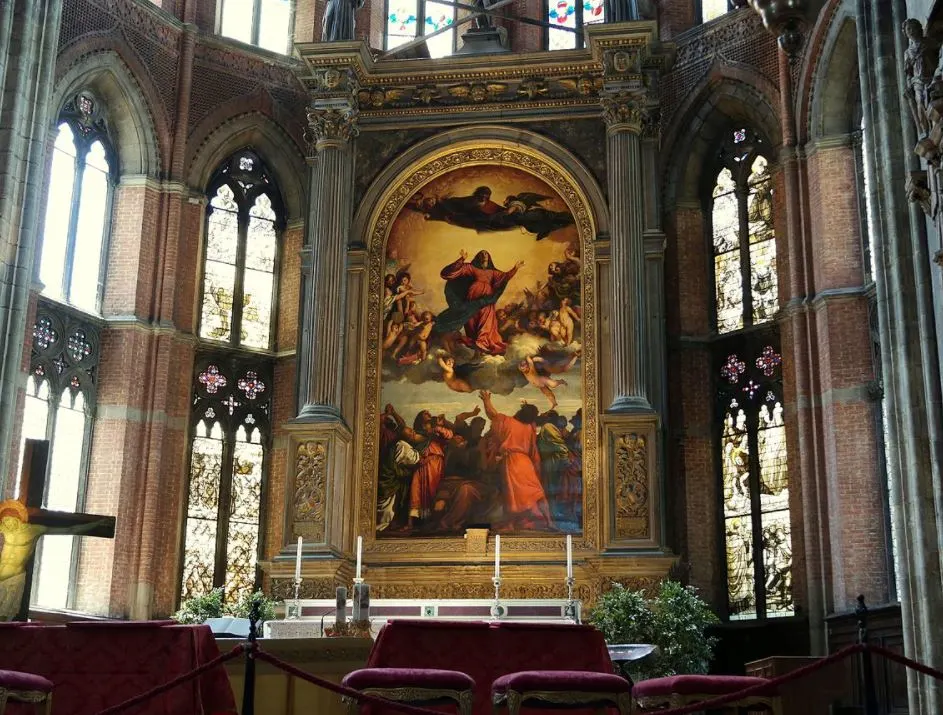Every renowned artist created one or multiple works that permanently put him on the map. In the case of Renaissance artist Tiziano Vecelli (1488-1576), better known as “Titian,” the work described in this article qualifies as such.
Let’s take a closer look at some of the most interesting facts about the “Assumption of the Virgin“, one of Titian’s ultimate masterpieces that has quite a few stories to tell.
1. It was painted at the height of the High Renaissance
The late 15th and early 16th centuries were one of the most exciting periods in the history of art. This was the time that multiple artists created some of the most famous works of art in history.
Some of these included “The Last Supper” by Leonardo da Vinci, “The Creation of Adam” by Michelangelo, and “The School of Athens” by Raphael, one of the masterpieces decorating the so-called Raphaels Rooms in the Apostolic Palace in Vatican City.
Titian was just in his twenties when he started painting this work. It was started in 1516 when he was 26 or 28 years old (his exact year of birth remains unknown and is either 158 or 1590) and completed just 2 years later in 1518.
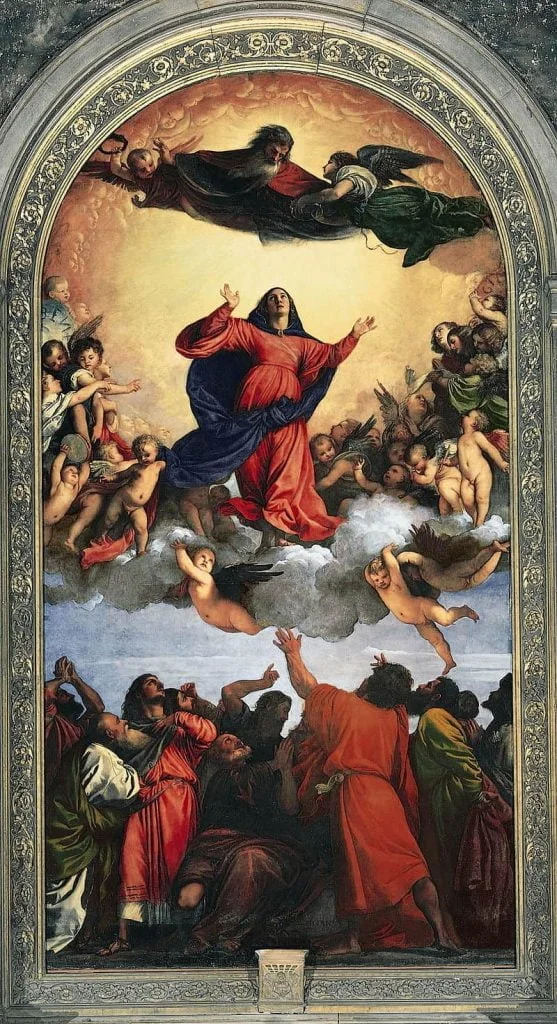
2. It’s still located in the same place that it was originally placed
The painting was commissioned to decorate the main altar of a church in Venice known as the “Basilica di Santa Maria Gloriosa dei Frari.” This church was only consecrated in the year 1492 so it was still relatively new back then.
The “Frari,” as the church is commonly referred to, features the second-tallest tower in the city after the Campanile of San Marco and features a large number of artworks. These include multiple paintings and even a statue of St. John the Baptist by Donatello.
Assumption of the Virgin was commissioned to decorate the main altar of the church, and apart from a period of absence between 1817 and 1919, still decorates the interior of this magnificent church today.
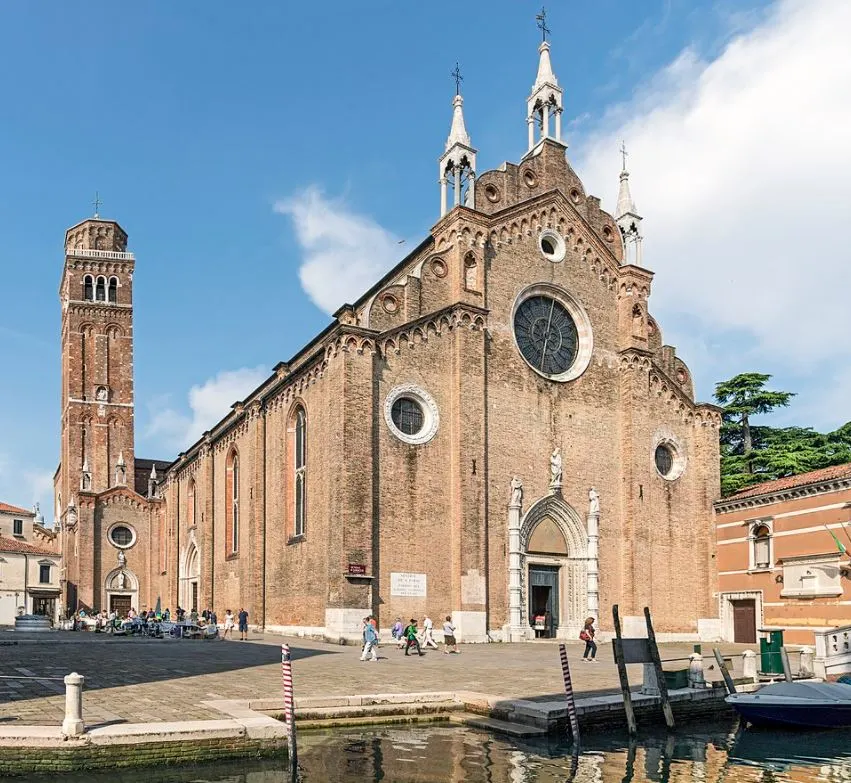
3. It was painted at a monumental scale for a particular reason
The painting is huge, and that’s mainly because the interior of the church is quite imposing as well. The oil on panel painting has dimensions of 690 × 360 centimeters (270 × 140 inches).

It decorates the main altar and regardless of its size, it still appears to be pretty small inside the imposing interior of the church.
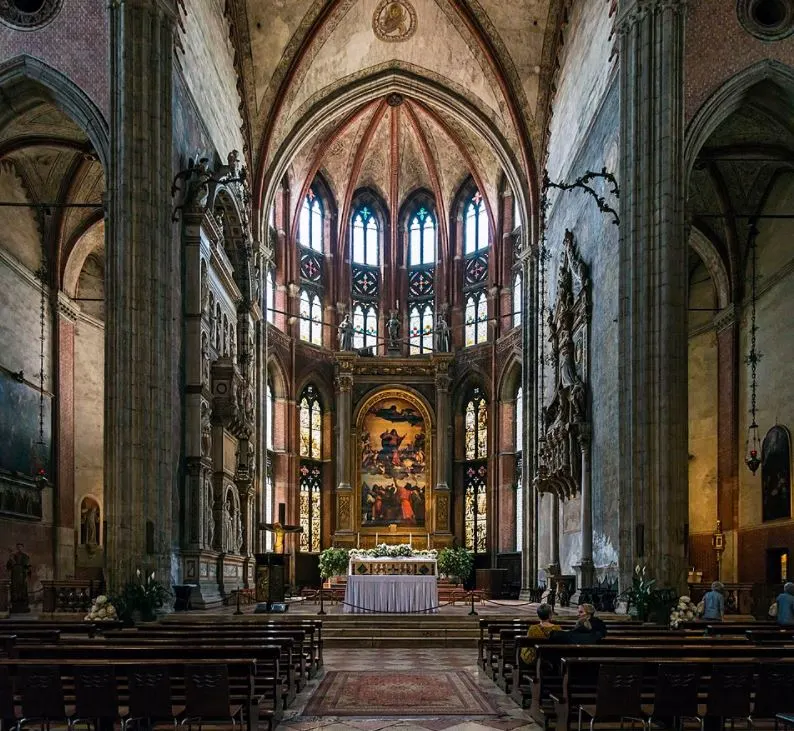
4. It depicts an important event in Marian theology
What’s remarkable about the subject of the painting, the Assumption of Mary to the Heavens above is that this wasn’t an official doctrine of the church back in the early 16th century.
In fact, it would remain optional until the year 1950 when Pope Pius XII made this particular article official. This also meant that how the Virgin Mary was transported above was up for interpretation.
Titian included glimpses of a stone sarcophagus at the bottom of the painting to clear all doubt about the fact that she was take up after she had died naturally. This was opposed by some people who claimed she was still alive during this event.
The so-called “Munificentissimus Deus” in 1950 didn’t take an official stance on the matter as well.

5. It resembles a famous painting that was created around the same time
The style of the painting was quite revolutionary at the time and permanently established Titian’s reputation as one of the leading painters of the Venetian School in the 16th century.
He eventually ended up being one of the leading figures together with Tintoretto and Veronese for most of the century as he died at a very old age.
A less fortunate artist was Raphael, who died of a fever in the year 1520. Just before he passed away he painted a work known as “Transfiguration,” which has a very similar composition.
The two works have been compared to each other and identify the individual style of the two famous artists, especially because the paintings were created at around the same time.
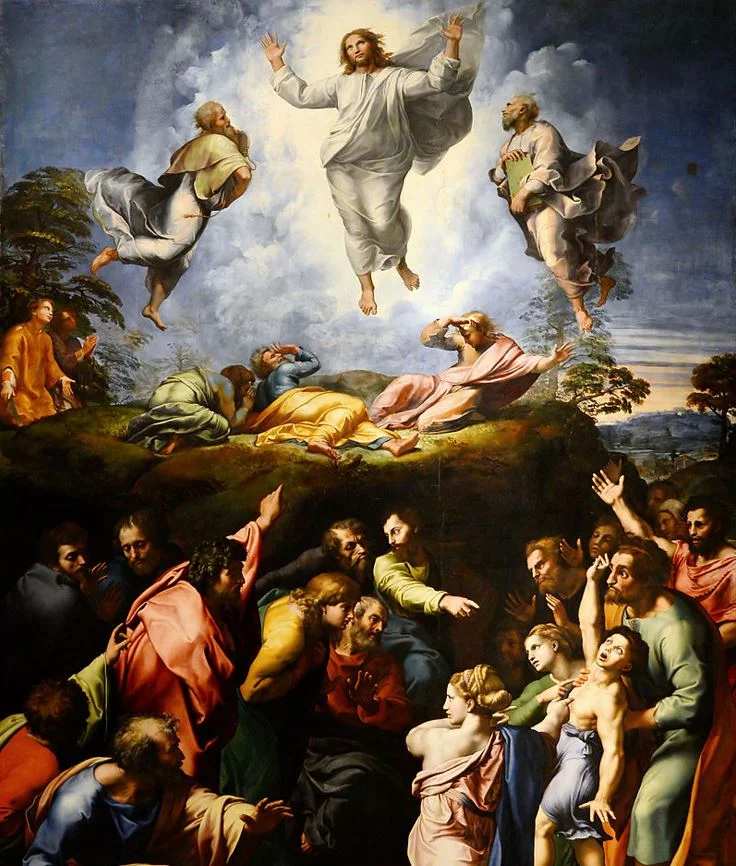
More facts about the Assumption of the Virgin by Titian
6. The painting is located in the Frari church in Venice, one of the 3 main churches in the city and one of the few that has retained its distinctive Venetian Gothic appearance.
The campanile of this church was completed in the year 1396, the façade in 1440, and the main altar which the painting decorates was consecrated in the year 1469.
7. Apart from the numerous works of art, the interior of the church also features a large number of funerary monuments, including that of Titian himself who was buried inside the church.
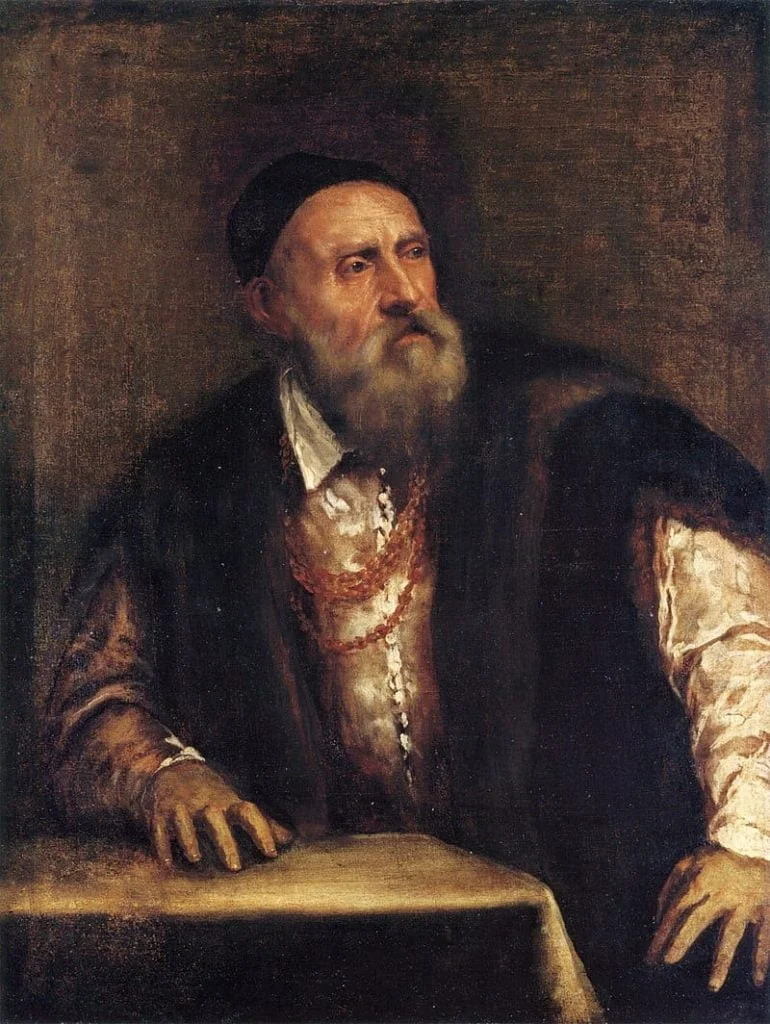
8. Apart from the Assumption of the Virgin, another work by Titian can be found here as well known as the “Pesaro Madonna.” This painting decorates the Pesaro Chapel inside the church.
It was completed between 1519 and 1526 and commissioned by the Pesaro family who had acquired the chapel inside the church in the year 1518.
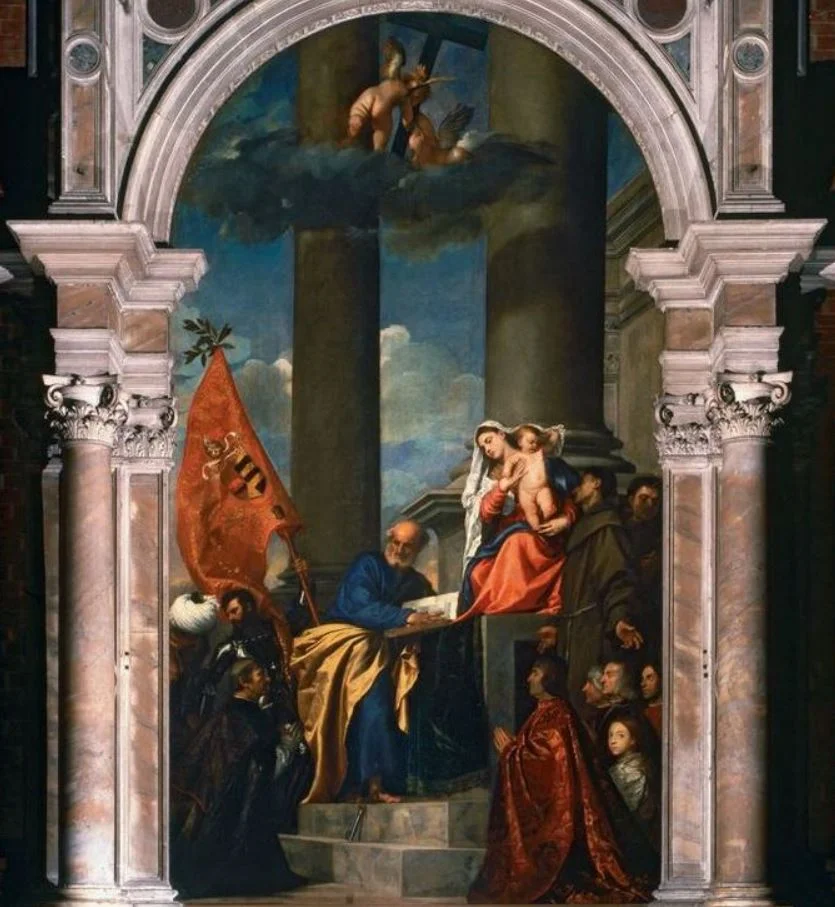
9. Even though the painting still decorates the location it was originally intended for, it was moved for just over 100 years in the 19th and 20th centuries.
Between 1817 and 1919 it was part of the collection of the Gallerie dell’Accademia, a museum in the city of Venice.
10. One of the most important reasons for the move was that the painting had accumulated a large amount of candle grease, something that tremendously reduced its coloration. That’s why it was described by Sir Joshua Reynolds in 1752 as “most terribly dark but nobly painted.”
The Accademia had to increase the height of its ceiling to accommodate it, but for a good reason. After seeing it in 1822, famous sculptor Antonio Canova described it as “the greatest painting in the world.”

11. The most remarkable element of the painting is the fact that the depicted figures appear to be quite agitated. This was in sheer contrast to the way people were portrayed in painting in Venice before.
The contrast is emphasized by a work located inside the church as well known as the “Frari Triptych” (1488) by Giovanni Bellini (1430-1516) which depicts the figures extremely sober.
12. The painting can’t be viewed up close. In case you make it to the wonderful Frari church in Venice, you’ll notice that there’s a rope separating tourists from the work at quite a distance.
